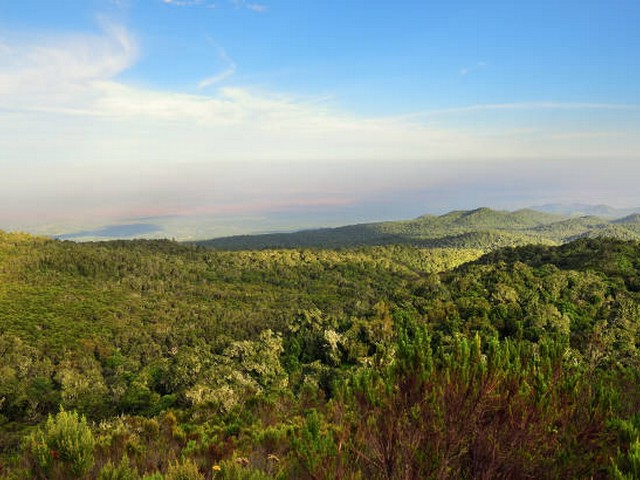Ascend with Confidence: Your Guide to the Lemosho Route Kilimanjaro Altitude
Introduction to the Lemosho Route
Welcome to the Lemosho Route, a path woven through the majestic tapestry of Mount Kilimanjaro’s lush landscapes and breathtaking vistas. At the Kilimanjaro Centre for Trekking and Ecotourism (KCTE), we believe every step on Kilimanjaro should be as inspiring as the views from its peak. The Lemosho Route offers a unique blend of beauty, challenge, and adventure, making it a favorite among our climbers. This comprehensive guide is designed to take you through the wonders of the Lemosho Route, focusing on its varying altitudes which are a key component to understanding and preparing for your trek.
Whether you’re a seasoned high-altitude trekker or a first-time climber, understanding the altitude specifics of the Lemosho Route will enhance your experience and increase your chances of a successful summit. Join us as we explore the heights of Kilimanjaro through the Lemosho Route and why it could be the perfect path for your transformative journey up this legendary mountain.
Why Choose the Lemosho Route?
The Path Less Travelled
Starting in the lush rainforests of the Lemosho Glades, the route spans approximately 70 kilometers and gracefully merges with the Shira Plateau. This merging not only offers climbers a scenic vista but also a smoother acclimatization process due to its longer duration and gradual increase in altitude. The Lemosho Route is praised for its lower foot traffic compared to other routes, providing a serene and intimate encounter with the natural wonders of Kilimanjaro.
A Gradual Ascent for Optimal Acclimatization
The Lemosho Route is meticulously designed to help you acclimatize naturally. Ascending slowly through different ecological zones, from rainforests to alpine meadows, and eventually arctic summits, enhances not only your adaptation to the altitude but your overall trekking experience.
Journey Through the Altitudes
Starting Off: Lemosho Glades to Shira Camp 1
The adventure begins at the Lemosho Glades, situated at an altitude of about 2,385 meters (7,825 feet). The trek to Shira Camp 1 is a gentle introduction, taking you through dense rainforests filled with exotic wildlife. This segment ends around 3,505 meters (11,500 feet), setting the stage for your body to start adjusting to higher elevations.
The Push Higher: Shira Plateau to Lava Tower
As you leave behind the forest, the expansive views of the Shira Plateau greet you, lying at an elevation of approximately 3,840 meters (12,600 feet). This segment is crucial for acclimatization as you traverse towards the Lava Tower, a significant landmark on the route, which stands at about 4,630 meters (15,190 feet). This segment tests your endurance and prepares your body for higher altitudes.
Reaching for the Sky: Barranco Camp to Barafu Camp
After a night’s rest at Barranco Camp (3,960 meters or 12,992 feet), you face the Barranco Wall, an exhilarating climb that requires some scrambling. This challenge not only boosts your altitude tolerance but also your confidence as you reach Barafu Camp at 4,673 meters (15,331 feet). This is your base for the summit push.
The Summit: Uhuru Peak
The climax of your Lemosho Route journey is the ascent to Uhuru Peak, the highest point in Africa at 5,895 meters (19,341 feet). Departing in the wee hours to catch the sunrise from the summit, you climb the final steep and snowy stretch, an endeavor that tests your spirit and stamina.
Preparing for the Climb
Physical Preparation
The varying altitudes of the Lemosho Route require not only physical stamina but also mental fortitude. Engaging in cardiovascular training, strength exercises, and regular hiking can help prepare your body for the demands of the climb.
Mental Readiness
The journey to Uhuru Peak is as much mental as it is physical. Preparing yourself mentally for the challenges ahead, staying positive, and being flexible will greatly enhance your climbing experience.
Acclimatization Tips
Taking it slow, staying hydrated, and eating well are crucial on your ascent. Our experienced guides at KCTE ensure you have the best advice and support to handle the altitude changes effectively.
Why Book with Kilimanjaro Centre for Trekking and Ecotourism (KCTE)?
Choosing KCTE means opting for a responsible, eco-friendly approach to climbing Kilimanjaro. Our expert guides are not only well-versed in high-altitude trekking but are also passionate about the mountain and its conservation. We ensure that your journey is memorable, safe, and leaves a positive impact on the local environment and communities.
FAQ
What is the success rate of the Lemosho Route?
The Lemosho Route boasts one of the highest success rates for reaching Uhuru Peak, thanks to its longer duration which aids better acclimatization.
How long does it take to complete the Lemosho Route?
Typically, it takes about 7 to 8 days to complete the Lemosho Route, depending on weather conditions and your pace.
Is the Lemosho Route suitable for beginners?
Yes, the Lemosho Route is suitable for beginners who are in good physical condition and have prepared adequately for high-altitude trekking.
What is the best time of year to climb the Lemosho Route?
The best times to climb are during the dry seasons, from late June to October and from late December to mid-March.
Conclusion: Your Call to Adventure
Conquering Kilimanjaro is more than just a climb; it’s a journey of self-discovery and resilience. The Lemosho Route, with its majestic altitude transitions and breathtaking landscapes, offers a path that is both challenging and rewarding. If you’re ready to embrace this adventure, book your climb with the Kilimanjaro Centre for Trekking and Ecotourism (KCTE) today. Let us guide you to the roof of Africa, where the sky is the limit and the views are as limitless as your potential. Join us, and ascend with confidence!




